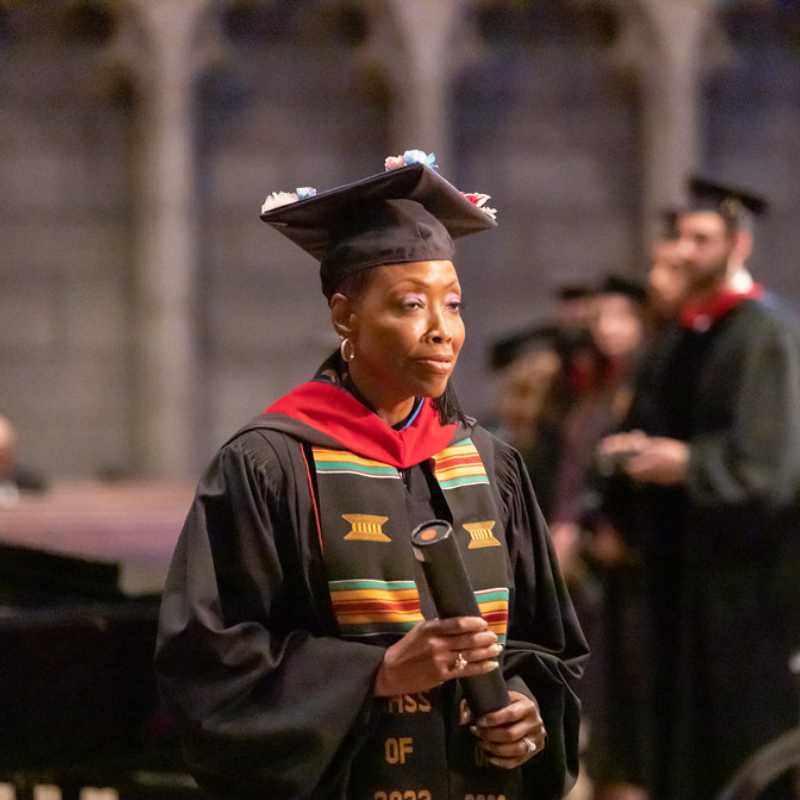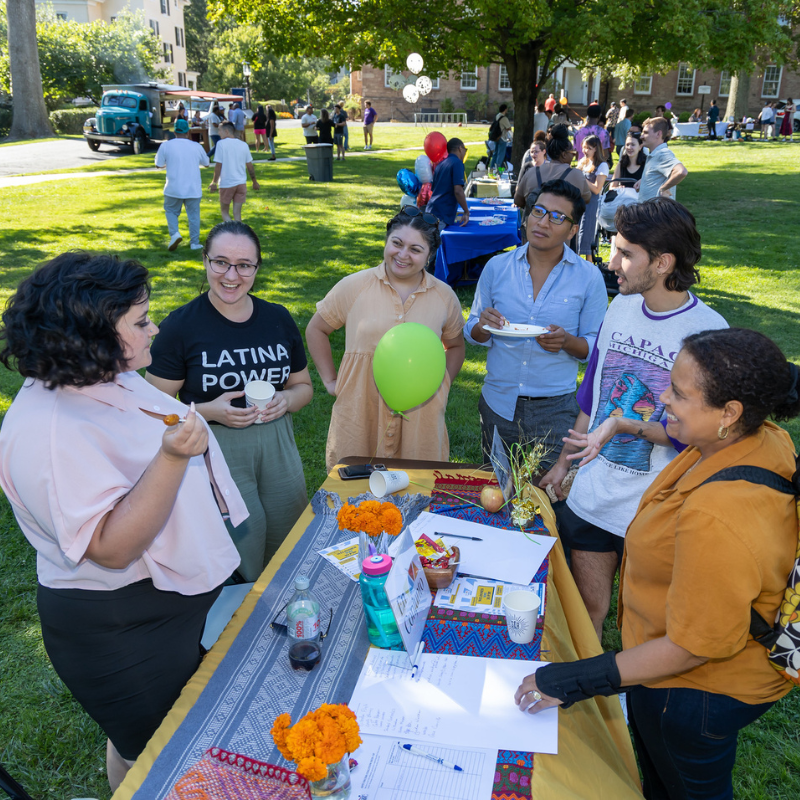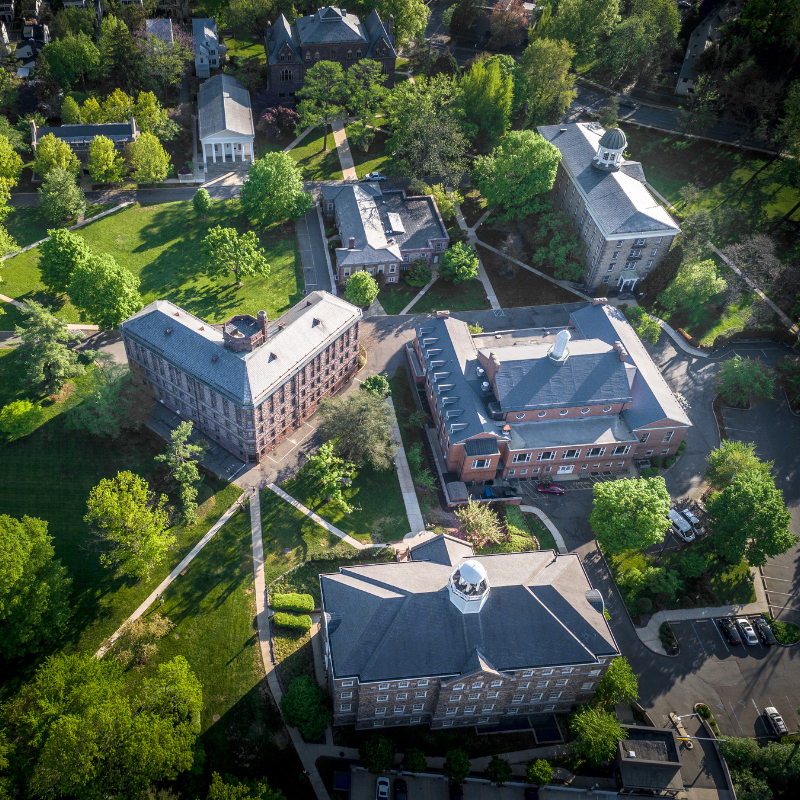Self Care and the Liberal Arts
January 3, 2019 | Continuing Education, Public, The Thread

We are currently experiencing one of the most contentious sociocultural, political, and religious environments in recent history. This social contention is acutely felt and experienced by people forced to exist at the margins, especially as political powerbrokers remain on a steadfast quest to make America great again.
The #metoo and #churchtoo movements have endeavored to shed light on some of the most heinous sexual crimes committed against women and girls. Yet, over the past several years, whether in sports entertainment, the criminal justice system, or in the political sphere, victims of sexual crimes risk being publicly excoriated if they dare raise their voice in protest or seek justice. Immigrants fleeing persecution and seeking refuge and safety in the United States (the foundational idea America was built upon) find themselves experiencing the additional trauma of being forcibly separated from their children, or being objectified in the media, with their personhood being subjected to the vilest stereotypes of criminality. Our children are subjected to secondary trauma when they find that even after their peers and friends are massacred in school, they receive the implicit message (through political inaction and ineptitude) that their personal safety takes a backseat to the ideological craving of some to possess high-powered automatic assault weapons designed for the sole purpose of levying mass death and destruction. The resilience and legacy of nationalism and white supremacy continues to evidence itself in ethnic minorities being massacred in their places of worship, or simply for being in public spaces at the wrong time. It seems that the installation of the first black family into the White House induced narcissistic injury on a certain portion of the American psyche, with the corresponding response being a brazen normalization (and moralization) of systemic hegemony aimed at the otherleast of these among us.
Where does a pastor who is charged with the care of souls situate herself in the midst of the present-day malaise? Moreover, in the midst of this turmoil, how does the pastor care for herself—first—so that she develops and sustains the capacity to care for others? Whether providing pastoral care in spaces at the margin, or providing pastoral care in spaces removed from (or desensitized to) the margin, how does the pastor care for herself in a way that preserves her sense of personhood and humanity? This question of self-care for pastors becomes more critical in the age of a 24-hour news cycle and social media, where images and stories of suffering can take a heavy toll on the emotional and spiritual well-being of both the pastor and the congregation. The personal well-being of the pastor is inseparable from the health of the community. The contemplative theologian Howard Thurman warns a young Martin Luther King Jr. of this as he recovered in the hospital from a stab wound that nearly cost him his life:
“I urged him to ask them to extend the period [in the hospital] by an additional two weeks. This would give him time away from the immediate pressure of the movement to reassess himself in relation to the cause, to rest his body and mind with healing detachment, and to take a long look that only solitary brooding can provide. The movement had become more than an organization; it had become an organism with a life of its own to which he must relate in fresh and extraordinary ways or be swallowed up by it.”[1]
Such advice for self-care would serve pastors well in this present time. While conversations about pastoral self-care are gaining more traction in theological education, we do a poor job of showing students how to actually engage in self-care. We fail to clearly articulate the absolute necessity of caring for oneself. Perhaps this is because as church leaders and religious educators, we have not been exposed to life giving self-care ourselves. The problem is further exacerbated when faith communities unconsciously idealize their pastor in the extreme, or unconsciously look to the pastor to provide individual or group affirmation in ways that go well beyond what any pastor or church can (or should) reasonably provide. The psychosocial needs of a church or community of care in the current sociopolitical environment can (in the words of Thurman) take on a life of its own and consume the pastor if she does not take the time for self-care so that she can relate to the community in new and life giving ways. This dilemma often reminds me of the epic scene in the classic movie Superman[2] where Lois Lane (played by Margot Kidder) is falling from a skyscraper and is caught by Superman (played by Christopher Reeve). She exclaims, “if you’ve got me…whose got you?” My question to pastors and communities of care is, “if the pastor has you…who has the pastor?”
Enter in the innovation of the Harlem Renaissance of the early 20th century, and the genius of Alain Locke! Considered by many to be the leading intellectual voice that recognized the renaissance occurring in the Harlem section of New York City, Alain Locke was a philosopher and aesthete who postulated that black identity and subjectivity must transcend the work of civil rights and resistance to racial terror. Criticized by many of his contemporaries for not being more directly involved with the work of critiquing and resisting racism and white supremacy, Locke believed individual or group identity understood solely (or primarily) in relation to resisting racism was tenuous at best, and not sustainable over the long run. For Locke, culture, aesthetics, and beauty were just as important to a meaningful life. Black subjectivity had to be crafted on its own terms, and not exclusively in relation to white supremacy. Speaking of the Harlem Renaissance, Cheryl Wall contends that one of its aims was “to achieve through art the equality that black Americans had been denied in the social, political, and economic realms…[and that] the Renaissance itself was a combustible mix of the serious, the ephemeral, the aesthetic, the political, and the risqué.”[3] Likewise, I contend that in the name of self-care (and self-love) pastors must experience their personhood and identity beyond the needs of the community of care, even in the current hegemonic environment where those who have been othered are systemically marginalized and oppressed.
As such, I invite pastors to include within their portfolio of self-care a radical engagement with culture and the liberal arts. Famed self-psychologist Heinz Kohut believed that in addition to human beings functioning as selfobjects,[4] culture could be used in the same manner.[5] I suggest that the arts, humanities, culture, cinema, dance, and the vast array of other genres in the liberal arts all have the potential to serve as counter-hegemonic cultural selfobjects. In using the arts as a resource, instead of normalizing the worst of what we can be, people have the opportunity to imagine and experience the best of what we can be. Art and culture have the potential to help pastors give voice and meaning to their personal suffering and grief, exhaustion, compassion fatigue, and burnout. Similar to how the Harlem Renaissance endeavored to remind us of (and point us towards) the goodness of life in the midst of racial terror, the liberal arts can do the same for pastors today. Indeed, culture and the liberal arts can provide us with resources that reorient us to being lovers, as oppose to life oriented around fear. It can reacquaint us with what it means to love ourselves (as opposed to self-hate), what it means to love another human being (as opposed to being suspicious of the other), what it means to possess courage and dignity (as opposed to cowardice and indecency), what it means to do the work freedom (as opposed to doing the work of oppression and bondage), and ultimately, what it means to be human.
[1] Thurman, H. (1979). With head and heart. New York: Houghton Mifflin Harcourt Publishing Company. / pg 254
[2] Donner, R. (Director). (1978). Superman [Motion Picture].
[3] Wall, C. A. (2016). The Harlem Renaissance: a very short introduction. New York: Oxford University Press. / pg. 1
[4] Selfobjects can be understood as the way we unconsciously use others to reinforce our personal sense of self and identity.
[5] Kohut, H. (1984). How does analysis cure? Chicago: The University of Chicago Press.

Dr. Danjuma Gibson is an associate professor of pastoral care at Calvin Theological Seminary (CTS). He is also in private practice as a psychotherapist in Grand Rapids, MI. Prior to joining CTS, he was the senior pastor of a church in Chicago for over sixteen years, and was also bivocational as commercial banker during that time. His most recent book—
Frederick Douglass, A Psychobiography: Rethinking Subjectivity in the Western Experiment of Democracy( 2018)—is in investigation into the formation of Douglass’ psychological and religious identity in the context of trauma and the American slavocracy. In addition to emotional and psychological trauma, Dr. Gibson’s current research includes exploring the intersection of black religious experience and psychoanalytic discourse in a way that is accretive to how we understand personhood, identity formation, and human flourishing. Dr. Gibson earned his Bachelor of Arts from Morehouse College, Master of Business Administration from DePaul University, Master of Arts in Urban Ministry and Master of Christian Studies from Trinity Evangelical Divinity School, and Doctor of Philosophy from Garrett Evangelical Theological Seminary. He currently holds memberships in the American Academy of Religion, The Society of Pastoral Theology, and the Society for the Study of Black Religion.





